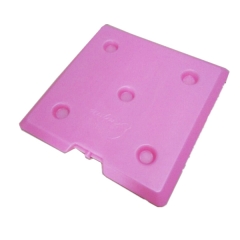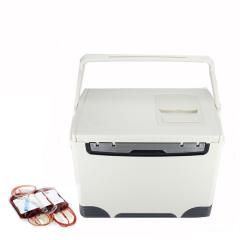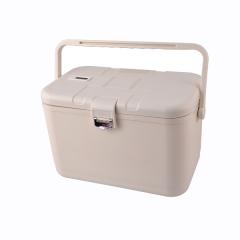Cold chain packaging is an essential part of temperature-controlled shipping since it serves as the initial line of defense for perishable goods. Products are susceptible to severe ambient temperatures without the proper cold chain packaging solutions, particularly if the refrigerated storage or transport equipment malfunction.
The best cold chain packaging solutions frequently eliminate the need for pricey refrigeration equipment.
Types of cold chain packaging
Active, passive, and hybrid are the three primary categories of cold chain packaging technologies.
Active Systems
The closest analog for active containers is a refrigerator. To keep product temperatures consistent, they employ thermostatic control in conjunction with mechanical or electric devices that are driven by an energy source. Systems frequently need “plug in time” to charge at crucial touch points and before usage.
A closed-loop distribution system is necessary for active systems in order to guarantee proper maintenance and recycling of reusable equipment. Despite providing accurate temperature control, these systems are expensive to buy, operate, and maintain. Due to their weight, potential need for repair while in route, and availability in fewer sizes than other shippers, they are also more expensive to ship.
Passive System
Insulating materials are used in passive cold chain packaging to shield items from ambient temperatures. Polyurethane (PUR), paper and paperboard and expanded polystyrene (EPS), as well as jute, fiberglass, cloth, polyethylene, and silica, are a few materials used in cold chain packaging. Phase change materials (PCMs) are also used by cold chain package producers in addition to insulating materials to maintain constant low temperatures.
According to laboratory research, passive cold chain packing may sustain low temperatures for delivery times of up to 96 hours or even longer than active approaches. Additionally, compared to active techniques, passive cold chain systems may maintain tighter temperature control across a larger temperature range.
The risk of rotting exists if a cargo is delayed and the transportation duration exceeds the packaging’s capacity to maintain temperature control, while being substantially more affordable than refrigerated units. Visit our product website for additional details about our passive systems.

Hybrid Systems
Active systems and hybrid systems are comparable, however hybrid systems also include a phase change material (PCM) bunker. Whenever the system is not being charged by a power source, the active component of the system charges a “PCM battery” that is utilized instead.
Many of the benefits and drawbacks that active systems have are also shared by hybrid systems. Hybrid shippers, however, have fewer parts that can need upkeep.

 العربية
العربية  English
English français
français русский
русский italiano
italiano español
español português
português 日本語
日本語 한국의
한국의 magyar
magyar










